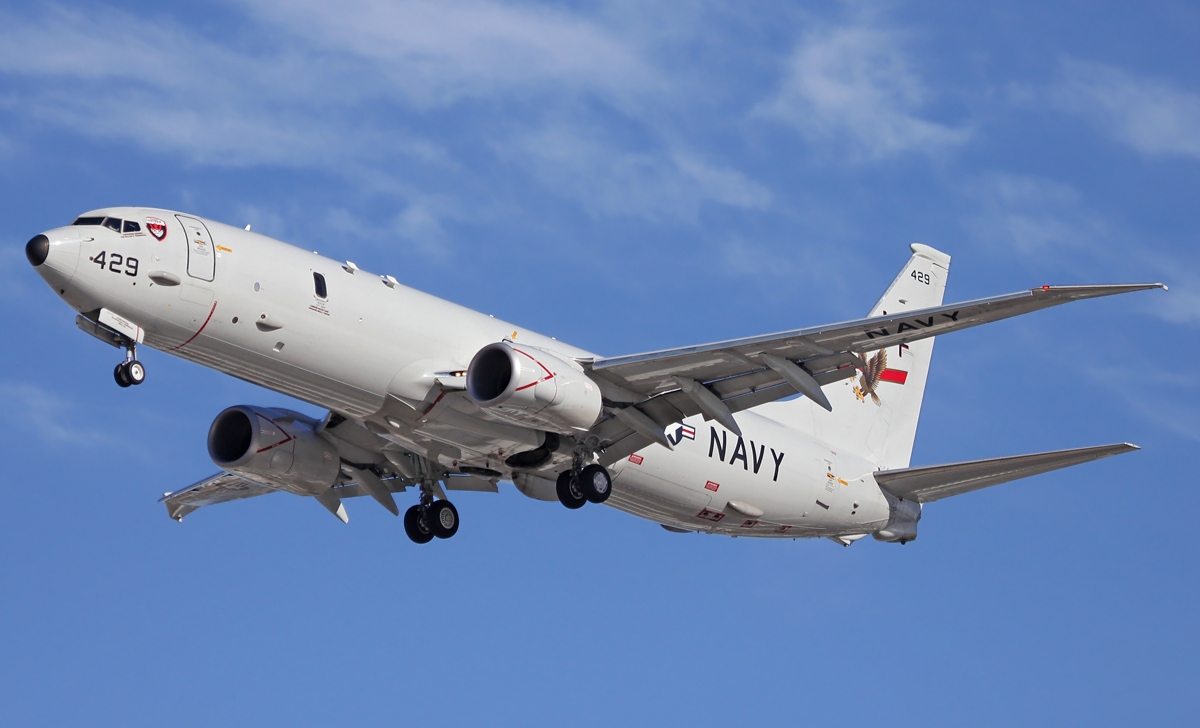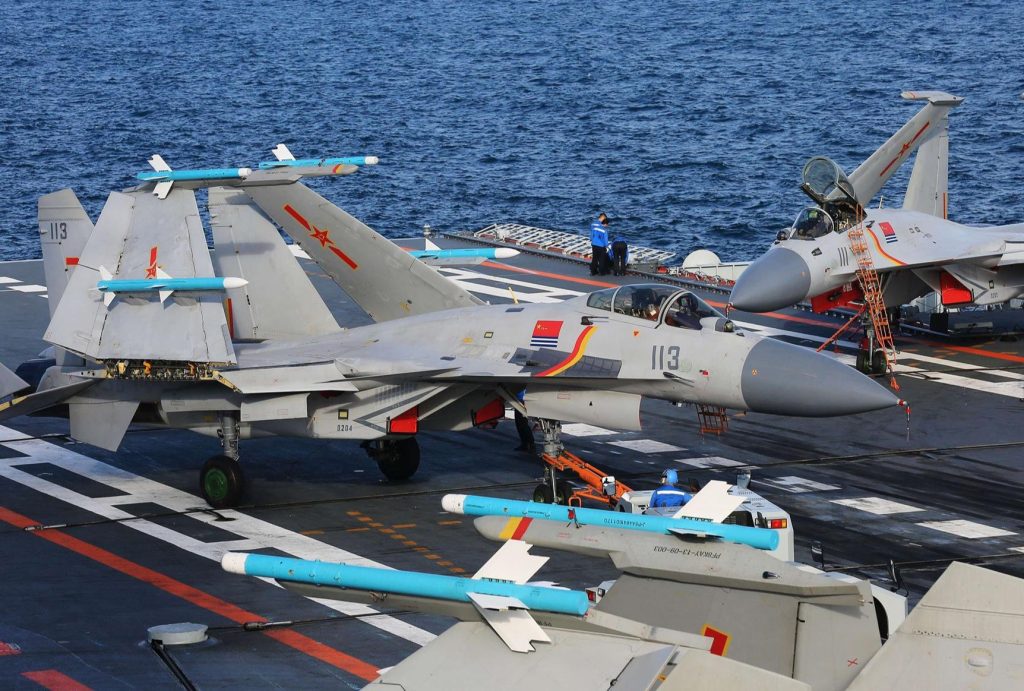PLAAF Fighter Jets Respond To Poseidon Threat As US Flies It’s Submarine Hunter Aircraft Over Taiwan Strait

By Ashish Dangwal, The EurAsia
On October 12, a US Navy P-8A Poseidon surveillance aircraft, also used for anti-submarine operations, conducted a flight over the contentious Taiwan Strait, leading to China deploying fighter jets to monitor and warn the US Navy surveillance plane.
The US 7th Fleet Public Affairs said, “A US Navy P-8A Poseidon transited the Taiwan Strait in international airspace on October 12 (local time). By operating within the Taiwan Strait following international law, the United States upholds all nations’ navigational rights and freedoms.”
The fleet also emphasizes that the passage of the aircraft through the Taiwan Strait underscores the United States’ commitment to fostering a free and open Indo-Pacific region. It reaffirms that the US military conducts operations following international law, operating in various domains, including the air and sea, wherever such laws permit.
According to Lt. Luka Bakic, a spokesman for the 7th Fleet, the aircraft followed a southward trajectory through the 110-mile-wide passage dividing mainland China from Taiwan. It entered from the East China Sea and exited into the South China Sea, characterizing this as a “routine transit.”
Furthermore, Bakic highlighted that US Navy vessels and aircraft frequently use the Taiwan Strait as a means of passage, a practice that has been in place for many years.
Bakic clarified that the flight was not initiated in response to any specific incident. The Navy frequently dispatches guided-missile destroyers and cruisers through the Taiwan Strait as part of their regular operations, and Navy aircraft also commonly traverse this route, even though the Navy might not always publicly report such activities.
The last known P-8A aircraft transit through the Taiwan Strait occurred on July 13, which was met with protest from China.
While the United States has traditionally carried out these transits as a component of freedom of navigation exercises, they have become more contentious, mainly due to China’s heightened presence and activities.
The US Navy did not provide specific details regarding whether the aircraft had encountered or engaged with Chinese or any other foreign military vessels and aircraft.
China Scrambles Fighter Jets
The flight of the US Navy P-8A Poseidon surveillance aircraft over the Taiwan Strait on October 12 has drawn a strong response from China.

Caption: A Chinese J-15 is moved on the flight deck of a People’s Liberation Army Navy aircraft carrier. (Chinese Defense Ministry)
In a written statement, Army Senior Colonel Shi Yi, spokesperson for the Chinese PLA Eastern Theater Command, condemned what he described as a “provocative move.” Chinese military labeled the flight as “public hype.”
The spokesperson explained that the Chinese PLA Eastern Theater Command had deployed warplanes to track and oversee the US aircraft’s intrusion following legal and regulatory protocols.
Colonel Shi Y added that the PLA Eastern Theater Command forces will maintain a constant state of high readiness to protect China’s sovereignty, security, and the region’s stability.
Taiwan’s defense ministry also confirmed that the US aircraft had traveled northward through the strait, staying within the median line. The Ministry assured that Taiwan’s military forces closely observed the situation, and it was reported as “routine” or “normal.”
Meanwhile, Aadil Brar, a Taipei-based journalist, noted that the Chinese People’s Liberation Army’s response to the US aircraft’s passage garnered significant attention within Chinese social media platforms.
Specifically, the search trend “Eastern Theatre Command responds to US P-8 aircraft passing through Taiwan Strait” emerged as the fifth most-discussed topic on the Chinese search engine, Baidu.
China routinely criticizes such transits as provocative. For instance, in response to a similar flight on April 28, the Chinese military heightened its readiness, characterizing the United States as a “disruptor of peace and stability” in the region.
China asserts its territorial jurisdiction over the naval and airspace in the Taiwan Strait, citing its claims over the island nation of Taiwan, which is situated on the southern side of the waterway.
The growing military tensions between the United States and China have spurred an escalation in the deployment of American and Chinese military assets across the region.
This is notably exemplified by the latest arrival of the nuclear-powered USS Ronald Reagan aircraft carrier in South Korea’s southeastern port of Busan on October 12.
The carrier’s presence in the region followed its active participation in a trilateral exercise conducted alongside South Korean and Japanese warships. This joint naval operation occurred near Jeju Island, off the Korean peninsula.
In early September, the Chinese aircraft carrier the Shandong sailed only 60 nautical miles (approximately 111 kilometers) from the southernmost point of Taiwan, a move perceived as a display of military strength as regional tensions continued to mount.
– Contact the author at ashishmichel(at)gmail.com







